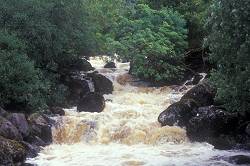Summary

The Forest Hydrology Programme involves a number of collaborative studies of the effects of forestry on flood flows. These include continuing long-term studies of the hydrological effects of upland conifer forests in research catchments at Coalburn in north England and Balquhidder in mid-Scotland. Staff were also involved in a major EU funded, Europe-wide study of the impact of forests and silvicultural practices on the extreme flows of rivers (FOREX) between 1996 and 2000.
The results of these studies show that while individual forestry practices and phases of forest growth can affect peak flows within small headwater catchments, the effects appear to even out at the larger catchment scale.
This is in line with research by CEH at Plynlimon in Wales, which found that upland floods in excess of the mean annual flood were scarcely affected by land use. It is also supported by the Natural Environmental Research Council Flood Studies Report of 1975, which found little evidence from regional flood studies in Britain that the area of forest was a significant factor in statistical relationships used for flood prediction. This evidence leads to the conclusion that upland forestry is unlikely to affect downstream flood risk.
The impacts of rural land use and management on flood generation were recently reviewed by a research consortium for Defra:
- Executive summary report (PDF-120K)
- Final report (PDF-1160K)
This has led to a re-examination of long-term flow data from a number of key catchments.
A world-wide review of the subject of forests and floods (PDF-708K) is available from the Food and Agricultural Organisation of the United Nations.
The role of woodland in flood control (PDF-148K) was reviewed by Nisbet and Thomas in 2006.
